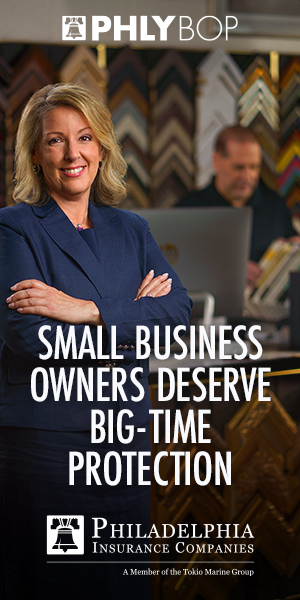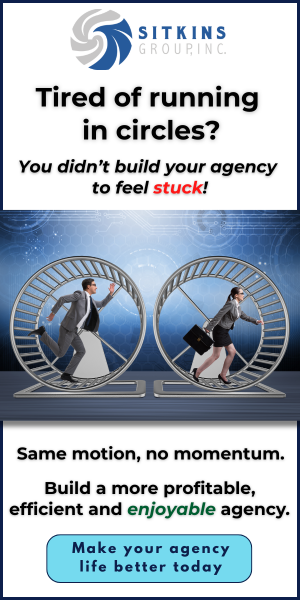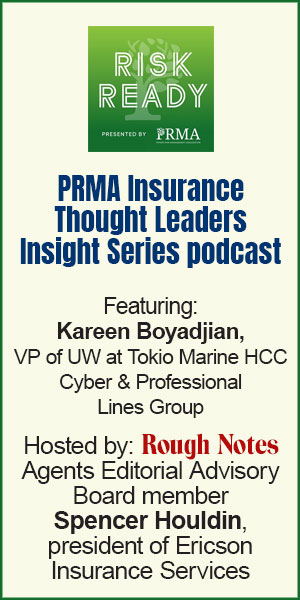A guide for young insurance professionals
—and not-so-young ones, too
By Heath Shearon
If you have been in the insurance industry for any length of time, you have probably heard the term “hard market” at least 100 times. Spend enough time with an insurance professional these days, and the conversation is bound to shift to a hard market discussion, and how they handle those tough conversations with clients.
Think about it, in this ever-evolving landscape of the insurance industry, the market is the major factor that controls how we do business. Whether it is a soft market or a hard market, you can expect to have challenges.
Right now, we are in the middle of one of the hardest market cycles this industry has ever seen (more to come on that). It’s almost like trying to juggle flaming torches while riding a unicycle. Carriers and their premiums are scarcer than a parking spot during Black Friday sales.
But hey, we are in this together, right?
We are currently in one of the most challenging hard markets in decades. This cycle, which began around 2019, has been shaped by unprecedented factors, from the global pandemic to inflation, natural disasters, and the soaring costs of labor and materials. For those new to the insurance industry, navigating these conditions can feel overwhelming. But rest assured, the hard market also brings opportunities to grow, innovate, and build stronger client relationships.
Drawing on years of experience and insights, I’ll break down what defines this hard market, what’s driving it, and how you can thrive as an insurance professional during these turbulent times.
What is a hard market?
A hard market is typically a very cyclical thing that we see for a year or less, with an upswing in premiums, underwriting becoming stricter, and insurers reducing capacity. In simple terms, carriers are more selective about the risks they take and customers often bear the brunt through higher costs and fewer options.
As I mentioned, this is typically a shorter occurrence; however, this current cycle seems to be more of a “new normal” than a cycle if you ask me. This current market that we are seeing is quite a bit different. For my history nerds out there, let me break it down a little further for you.
Historically, the insurance industry has experienced only a few true hard markets:
- 1985–1987: Triggered by major lawsuits that led to tort reform.
- 2001–2004: Resulted from the catastrophic losses of 9/11.
- 2019–Present: Driven by the global pandemic, inflation, supply chain disruptions, and escalating natural disasters.
The current market is one of the hardest we’ve seen, with challenges exacerbated by rising construction costs (up 34% since the pandemic), soaring labor expenses (up 28%), and eight consecutive years of billion-dollar catastrophes.
What’s driving the current hard market?
Several interconnected factors are making this hard market particularly challenging:
- Economic pressures. Inflation has driven up the costs of materials and services, making claims more expensive. For instance, a vehicle repair that cost $500 in 1997 now averages $1,300, while electric vehicles cost 58% more to repair than gas-powered cars.
- Natural disasters. In 2022 alone, the United States accounted for 75% of global insured losses, with Hurricane Ian leading the charge. Climate change is amplifying the frequency and severity of extreme weather events, adding to the industry’s risk exposure.
- Shrinking capacity. Insurers are pulling back on their willingness to write certain policies or cover high-risk areas. This has reduced market competition, further driving up premiums.
- Behavioral shifts. The pandemic left its mark on driving behaviors, with increased speeding and reduced seatbelt usage causing road fatalities to reach their highest levels since 2005.
All of the above factors obviously have a ripple effect and cause agencies to have challenges they never had to face before. These may include lack of control. One of the most difficult aspects of the hard market is the feeling of helplessness. Rising rates, tightened coverage, and limited capacity are beyond an agent’s direct control. However, there are ways to regain a sense of agency by focusing on what you can influence. And we’ll address these shortly.
They may also include the challenge of handling tough conversations with clients. When clients face steep premium hikes or policy cancellations, their frustration often lands squarely on the agent’s shoulders. These difficult conversations can test your communication skills, patience, and professionalism.
Anytime you have this much change at such a rapid pace, there are also going to be other challenges as well. As carriers tighten underwriting criteria and adopt more technology-driven solutions, staying informed and adaptable is essential. Agents must embrace these changes to remain competitive.
All this being said, there are definitely some strategies that you can implement in order to thrive in this hard market. Throughout my career I have seen several solutions implemented that have worked to help navigate it successfully:
- Tier your clients strategically. Not all clients are created equal, and that’s okay. Tiering your client base helps you allocate resources effectively and focus on building relationships with those who align with your agency’s goals.
- Top-tier clients. These clients are loyal, generate significant revenue, and value your expertise. Invest time in nurturing these relationships. Provide tailored solutions and personalized attention.
- Lower-tier clients. Some clients may be overly demanding or unprofitable. Don’t be afraid to let them go if they drain resources that could be better spent elsewhere.
- Understand your value add. What sets your agency apart? Whether it’s expertise, cutting-edge technology, or proactive risk management, make sure your clients know what you bring to the table. Beyond policy placement, offer education, resources, and guidance that demonstrate your long-term commitment to their success.
- Master tough conversations. These moments are where you truly earn your keep. When discussing premium increases or stricter terms:
- Listen first. Allow clients to vent their frustrations. Empathy builds trust.
- Educate them. Help clients understand the broader market forces driving their costs. Transparency fosters understanding.
- Provide solutions. Offer alternatives such as higher deductibles, risk mitigation strategies, or improved safety practices.
Avoid apologizing for the hard market—this isn’t your fault. Instead, position yourself as a trusted advisor who is guiding them through a challenging time.
- Leverage technology thoughtfully. Your tech stack can make or break your efficiency during a hard market. Start by optimizing your agency management system and customer relationship management (CRM) tools. Avoid “shiny object syndrome” by focusing on solutions that genuinely enhance your processes and client experience.
Involve your team when evaluating new tools, and prioritize adoption by providing training and feedback loops. Remember, technology should empower your staff, not replace them.
- Build strong carrier relationships. The hard market doesn’t just affect agents and clients—it’s tough on carriers too. Strengthen these partnerships by:
- Maintaining open and consistent communication.
- Understanding the carrier’s underwriting goals and risk appetite.
- Developing strategies to align with their needs.
- Showing appreciation for their challenges and finding ways to make their jobs easier.
Avoid apologizing for the hard market—this isn’t
your fault. Instead, position yourself as a trusted advisor who
is guiding them through a challenging time.
These relationships are vital to securing favorable terms and efficient processing for your clients.
While the hard market poses challenges, it also fosters long-term thinking and strategic innovation. Your clients are more motivated than ever to adopt better practices, giving you a chance to collaborate on meaningful solutions. Therefore, improving your risk management strategies and educating your clients on these strategic initiatives can really be a game changer for you.
Building trust and delivering value leads to stronger client loyalty, which is more cost-effective than acquiring new business. This is a big reason I have also advised agencies to focus on the value that they bring to the table over price.
One of those ways to provide this value for you may be to find ways to save money by being more efficient and adopting tech-driven options. Insurtech tools offer ways to streamline workflows, analyze data, and customize coverage, positioning you as a forward-thinking professional. These allow you to spend less time on mundane tasks and more time on your clients and the value add you provide.
Another way to remain effective and efficient is by exploring a niche driven approach, allowing you to become an expert in a smaller segment of business. This is more of a highly concentrated effort in one or two specific verticals. The other route to niches is often seen in targeting high-demand areas like cyber insurance or climate risk assessment to differentiate yourself from competitors.
Confidence, adaptability, and trust are your best allies in this hard market. My advice to younger professionals or those newer to our industry who are looking to build a resilient career is threefold:
- Invest in learning. Pursue certifications like CPCU or CIC and stay updated on market trends.
- Cultivate relationships. Trust remains the cornerstone of success, whether with clients, carriers, or colleagues.
- Be a problem solver. Focus on proactive, client-centric solutions that address both immediate needs and long-term goals.
The hard market is a shared challenge, impacting every corner of our industry. But it’s also an opportunity to grow, innovate, and strengthen your skills as an insurance professional. By focusing on what you can control—your relationships, your value proposition, and your ability to adapt—you’ll not only navigate this market but come out stronger on the other side.
Remember, tough markets don’t last forever, but the lessons you learn and the relationships you build during these times will shape your career for years to come. Stay focused, stay resilient, and above all, stay committed to your clients and your craft. This hard market is your moment to shine.
The author
Heath Shearon is a second-generation insurance professional, creator of the Insurance Town podcast, and sales coach. He built a successful agency before transitioning to the carrier side. Working with hundreds of insurance agencies throughout his career as a marketing representative and consultant, he has a natural ability to network and build relationships. He has parlayed that into a career in consulting with agencies all over the country in the areas of sales strategies, niche marketing, relationship building, cross-selling, customer retention, mergers and acquisitions, developing culture, and brand-building—among other things. Heath is a strong believer of the accountability factor in coaching and enjoys working with agencies both large and small. Over the past two years, he has spent time working on his own brand, Insurance Town, and working with agencies to help them develop their own branding and culture for their businesses. Through accountability and consulting, he has helped agencies grow and achieve their goals, oftentimes exceeding them.






